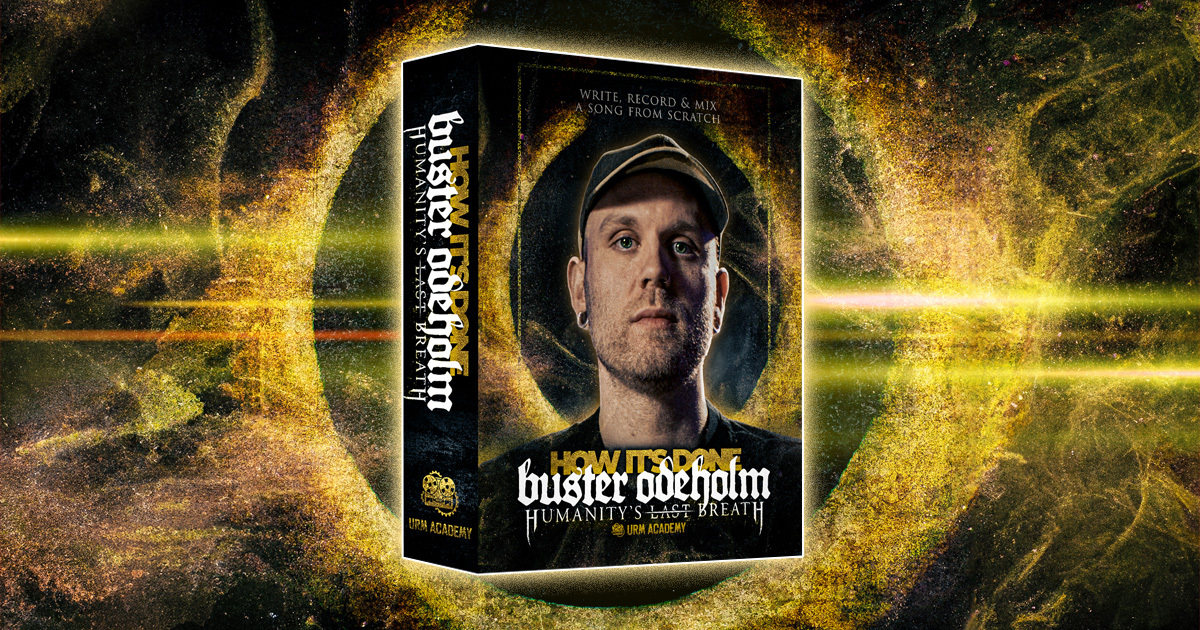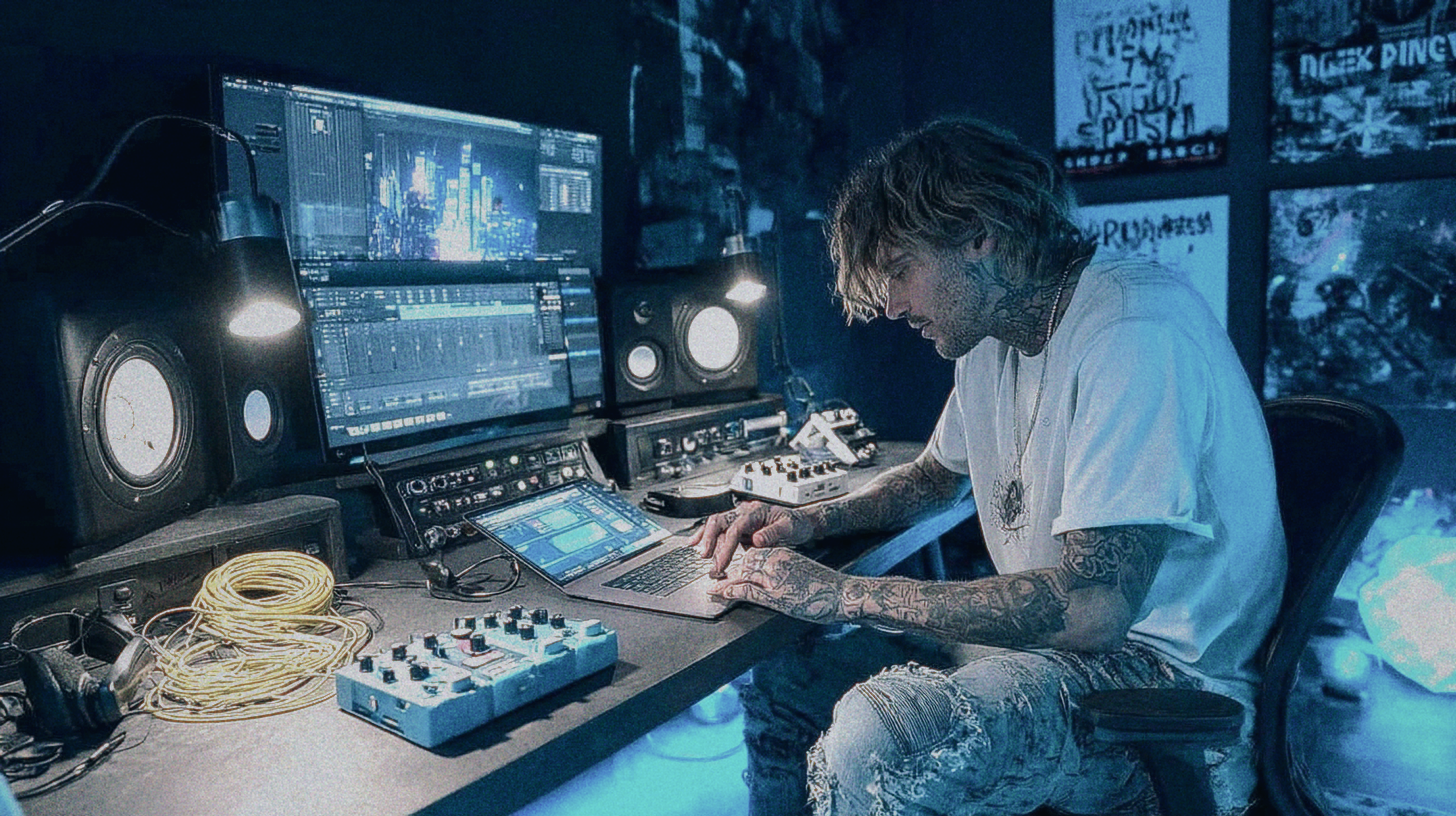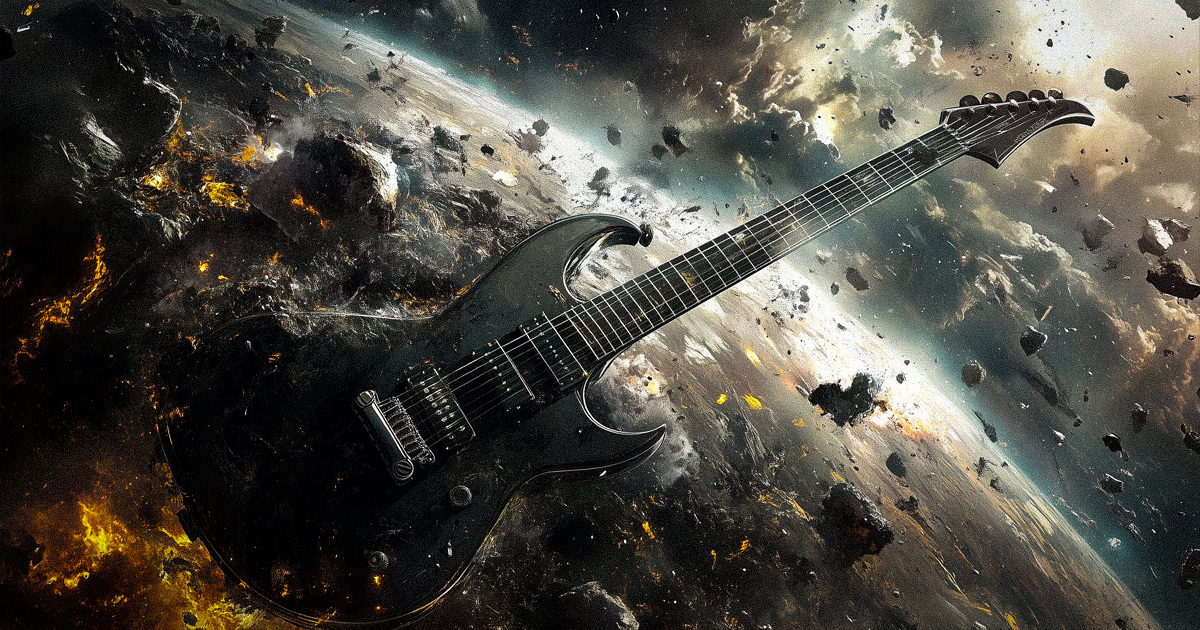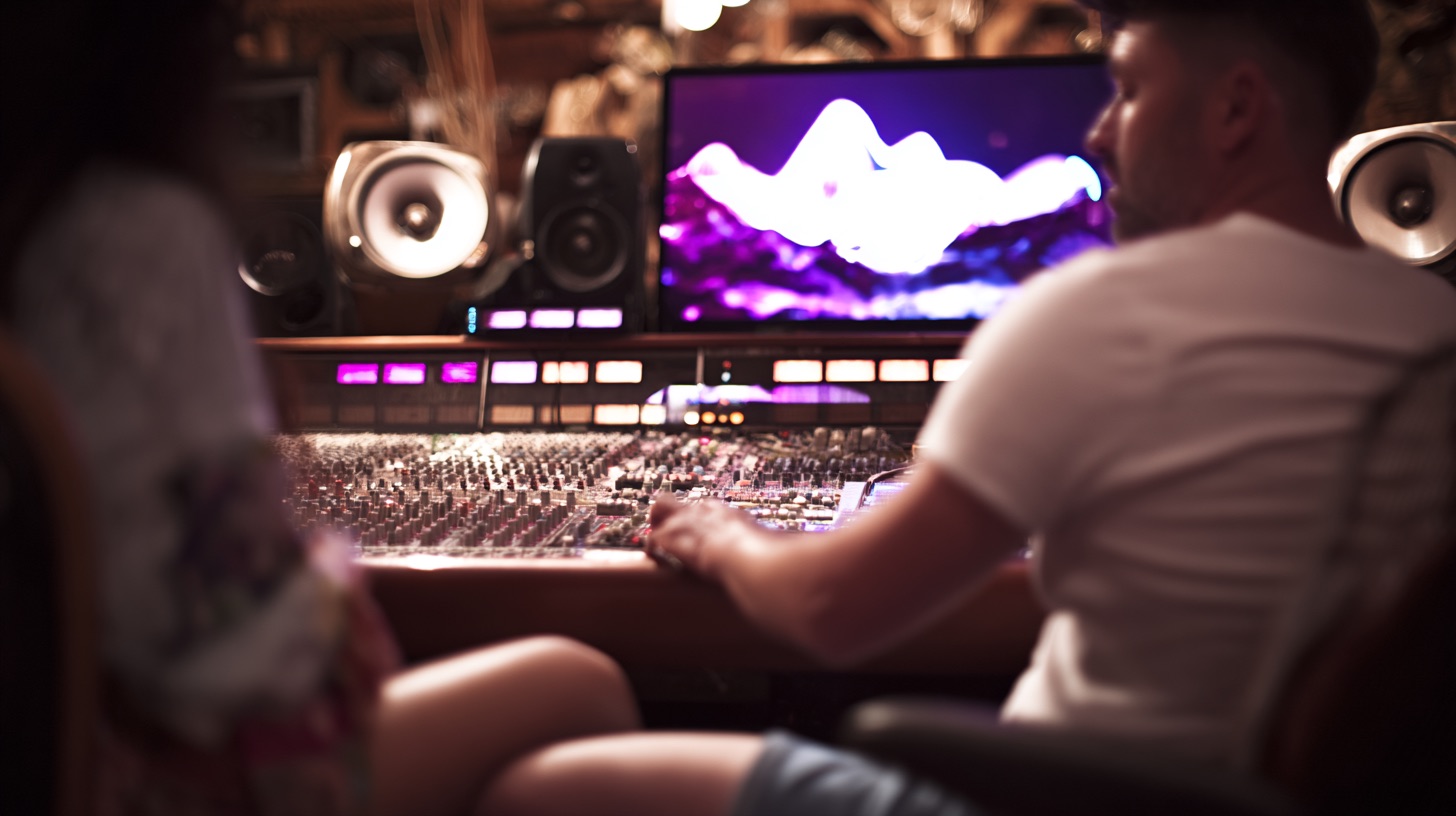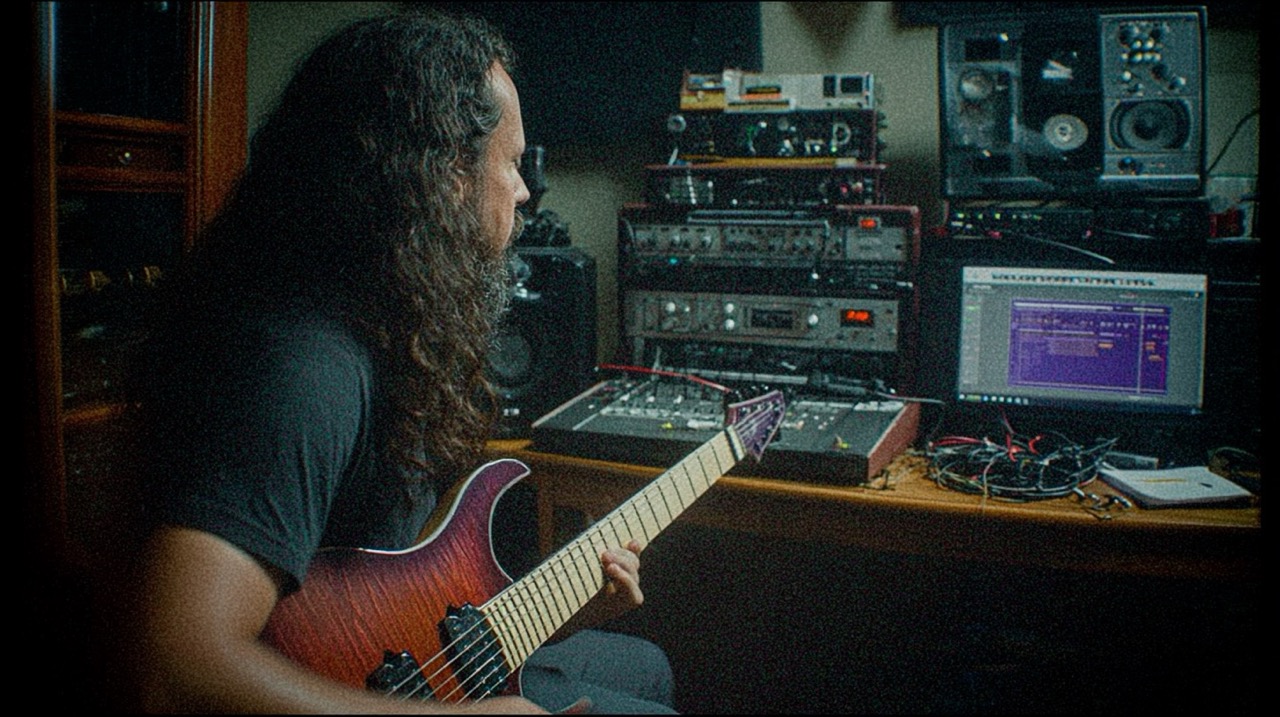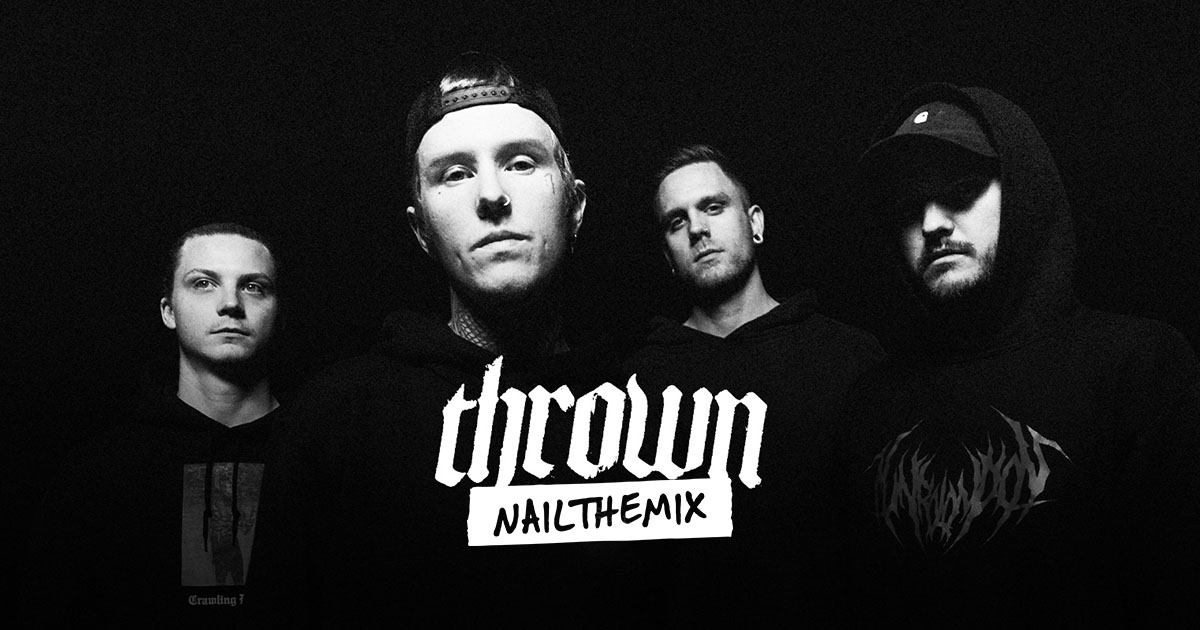
Dialing Thrown’s Vicious Guitar Tone with Buster Odeholm
Nail The Mix Staff
Let’s be honest, the guitar tone on the new Thrown record is absolutely disgusting—in a good way. It’s raw, it’s angry, and it hits with the force of a battering ram. That skull-crushing sound is the handiwork of producer and mixer Buster Odeholm (Humanity’s Last Breath, Vildhjarta), who has a knack for crafting some of the most aggressive and forward-thinking tones in modern metal.
Ever wondered how he dials in that sound? It’s not about finding one magic preset. It’s a calculated process of pre-shaping, aggressive layering, and smart bus processing. We’re going to break down the exact chain Buster used to get that signature Thrown guitar sound, packed with actionable tricks you can try in your own mixes.
The Foundation: Pre-Amp Shaping and the Core Tone
Before you even think about parallel chains and bus processing, the core tone has to be solid. Buster starts by getting the DI signal right and selecting the right amp sim.
Sculpting the DI Before the Amp
One of the most crucial and often overlooked steps is shaping your guitar signal before it hits the amp. Buster starts his chain with an EQ move designed to emphasize the nastiness he wants and cut what he doesn’t.
He applies a boost to bring out the “scratchy, stringy noise” of the pick hitting the strings, giving the tone an immediate raw and textured feel. Right after that, he uses a high-cut filter to tame the “super high stuff”—that harsh, fizzy noise that can make a tone sound thin and cheap. This pre-shaping ensures the amp is being fed a signal that’s already tailored for aggression.
The Amp and Cab Foundation
For the main amp tone, Buster turns to Neural DSP’s Archetype: Nameless. He uses the “gate grind” setting, which provides a tight, high-gain foundation perfect for modern metal. This amp sim is known for its ability to bring out that stringy attack, which works perfectly with his pre-EQ shaping. The signal then runs into the amp’s matched cabinet, creating a solid starting point for the rest of the chain.
The Secret Sauce: Aggressive Parallel Processing
Here’s where the real magic happens. A single amp tone is rarely enough for a sound this massive. Buster builds the full character of the tone by blending in several parallel layers, each with its own specific job.
Adding Grind with a Parallel HM-2
To inject some classic Swedish death metal filth, Buster brings in the legendary Boss HM-2 “chainsaw” sound. He runs a parallel track with an HM-2 style plugin, set to include a slight low-end bump, and blends it in at just 20%. This adds a layer of grind and texture without completely taking over the core tone. It sits underneath, giving the chugs an extra-nasty edge.
The “Fatso” Octave Trick for Unholy Low End
This is a game-changing technique Buster has been using lately. To make the guitars sound lower and heavier than they were actually tuned, he creates a unique low-end octave layer using Neural DSP’s Archetype: Gojira.
Here’s the process:
- Set up another parallel track and load the Gojira plugin.
- Engage the Pitch block and select the “Fatso” setting, which creates a clean octave-down signal.
- Use the plugin’s EQ block to filter out all the high and mid frequencies, leaving only the sub-bass from the octaver.
- Blend this filtered octave signal underneath your main rhythm guitars.
The result is a deep, powerful low-end rumble that tracks perfectly with your riffs, adding immense weight and making the guitar sound like it’s tuned way down into oblivion.
Punching Up the Attack with a Transient Designer
To ensure the chugs cut through with maximum impact, Buster also adds a Transient Designer into the mix. This processor is used to emphasize the initial pick attack of the guitar, making every note more percussive and defined, which is essential for fast, technical riffing.
Gluing It All Together: Bus Processing That Slams
With all the layers in place, the final step is to send them all to a guitar bus and process them as a single, cohesive unit. This “glue” is what turns a collection of good sounds into one monstrous tone.
Strategic Bus EQ for Maximum Impact
The bus EQ isn’t about drastic changes, but rather smart, targeted tweaks to make the tone work everywhere. For a deep dive into how the pros approach this, check out our guide on EQ Strategies for Mixing Modern Metal.
Buster’s EQ on the Thrown bus has two key goals:
- Mono Compatibility: He adds a specific mid-range boost to ensure the guitars will pop out and sound powerful even on mono-based systems like a phone or a Bluetooth speaker.
- Corrective Carving: After analyzing the tone, he identified some mid-range frequencies that were lacking in the cabinet impulse response. He uses a few precise, narrow boosts to bring that missing body back into the tone, followed by another high-cut to keep everything smooth.
Tape Saturation and Compression for Heft
Two plugins play a huge role in finalizing the bus tone. First up is Slate Digital’s VTM (Virtual Tape Machine). Buster raves about this plugin, noting that he specifically leaves the low-end unfiltered to allow the chugs to retain all their power. The tape saturation adds weight, low-mid saturation, and a sense of cohesion that he feels is irreplaceable.
Next is a bus compressor. He aims for around 3dB of gain reduction to gently tame the peaks and glue all the layers together. This isn’t about squashing the life out of the tone, but making it feel more powerful and controlled.
Essential Gating and Kick Ducking
To keep things ultra-tight, the bus gets another heavy gate. Finally, he uses a sidechain tool like Kick tucker to duck the guitars slightly every time the kick drum hits. This creates a pocket in the mix for the kick to punch through, making the entire rhythm section feel more impactful.
THROWN on Nail The Mix
Buster Odeholm mixes "guilt"
Get the Session

100+ Insanely Detailed Mixing Tutorials
We leave absolutely nothing out, showing you every single step
Bringing It All Together With Nail The Mix
Buster Odeholm’s approach to the Thrown guitar tone is a masterclass in modern metal production. It’s all about a solid foundation, creative layering with the parallel octave trick, and thoughtful bus processing to create a sound that’s both massive and detailed.
Trying these techniques will get you started, but imagine watching Buster build this entire mix from the ground up. In his exclusive Nail The Mix session, you can do just that. Download the raw multitracks for Thrown’s “guilt” and watch as Buster mixes the song from scratch, explaining every plugin, setting, and decision along the way.
It’s your chance to go beyond articles and tutorials and learn directly from the pros who are shaping the sound of modern metal. See how these techniques fit into the context of a full mix and gain the insights needed to transform your own productions.
THROWN on Nail The Mix
Buster Odeholm mixes "guilt"
Get the Session
Ready to stop guessing? Join the Nail The Mix community today and get access to the Thrown session, plus a massive vault of courses and multi-tracks from the biggest names in metal. If you’re serious about taking your skills to the next level, our Unlock Your Sound course is the perfect place to start your journey. Get inside the Thrown session now!
Get a new set of multi-tracks every month from a world-class artist, a livestream with the producer who mixed it, 100+ tutorials, our exclusive plugins and more
Get Started for $1